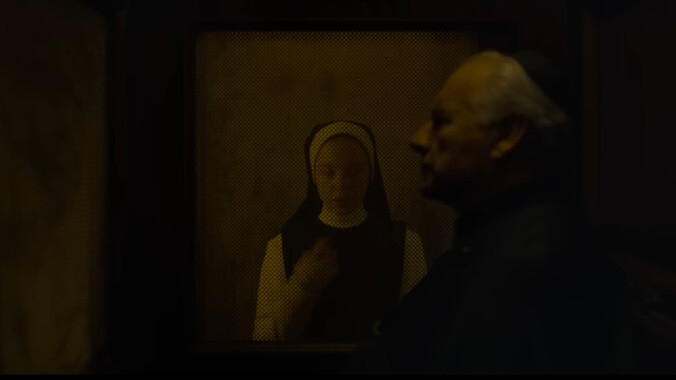There’s a lot of talk these days about what’s broken in our current era in the entertainment industry. What counts as cinema? Where did all the jobs go? How do we get people to go to theaters again? Are artists and technicians being compensated fairly for their labor? These are thorny, existential issues, but some of them are more basic. Why does everything sound like that? Why does everything look like that? Do these issues lie in the creation or the distribution? When it comes to the overwhelming darkness of film and television, theories have been proposed to support both of these possibilities. Now, director Michael Mohan of this year’s horror hit Immaculate has shed a bit more light on the situation.
Compression is the digital process by which the size of a film’s data is reduced in order to be reproduced for video on demand formats (i.e., home viewing). A movie as it’s being filmed and projected in theaters represents a massive amount of data, and when the movie gets compressed for your TV, phone, or laptop, some data gets stripped away. Compression generally means that images look a little worse on personal screens than in theaters, and the diminished quality tends to be more noticeable in darker scenes.
This is compounded by the fact that we’re in what cinematographer and colorist Devan Scott termed the “New Darkness movement” in conversation with The A.V. Club last year. The rise of digital filmmaking granted artists more flexibility with lighting, and there’s currently a trend in cinematography towards darker, moodier scenes. Game Of Thrones’ cinematographer Fabian Wagner said the infamously dark Battle of Winterfell looked exactly how it was supposed to look. Scott says he “got asked, ‘How do I make my film look like Arrival?’”, another much-discussed “dark” project, “for two years.”
Artistic intent is well and good, but in the case of Immaculate, what home audiences are seeing was not the intent of the artists. As Mohan points out, the varying streaming platforms produce different results, which only further complicates the issue of VOD quality. Audio technicians have voiced similar frustrations on the subject, as sound quality has been debated as frequently as lighting. “Every network has different audio levels and specs,” Jackie Jones, Senior Vice President at post-production company Formosa Group, told The A.V. Club in 2022. “Whether it’s Hulu or HBO or CBS. You have to hit those certain levels for it to be in spec. But it really is how it airs and how it airs is out of our control.”
It’s hard to know what the solution is here, particularly when it comes to movies and compression. VOD audiences have to accept a certain amount of diminished quality (and, cinema buffs may hope, that might be an incentive to see more in theaters). However, standardized specs across the industry could at least optimize the VOD viewing experience across platforms. It’s hard to know what’s feasible when the streaming giants keep their tech secrets more shadowy and opaque than their dark, dark screens. But a better world must be possible, right?

